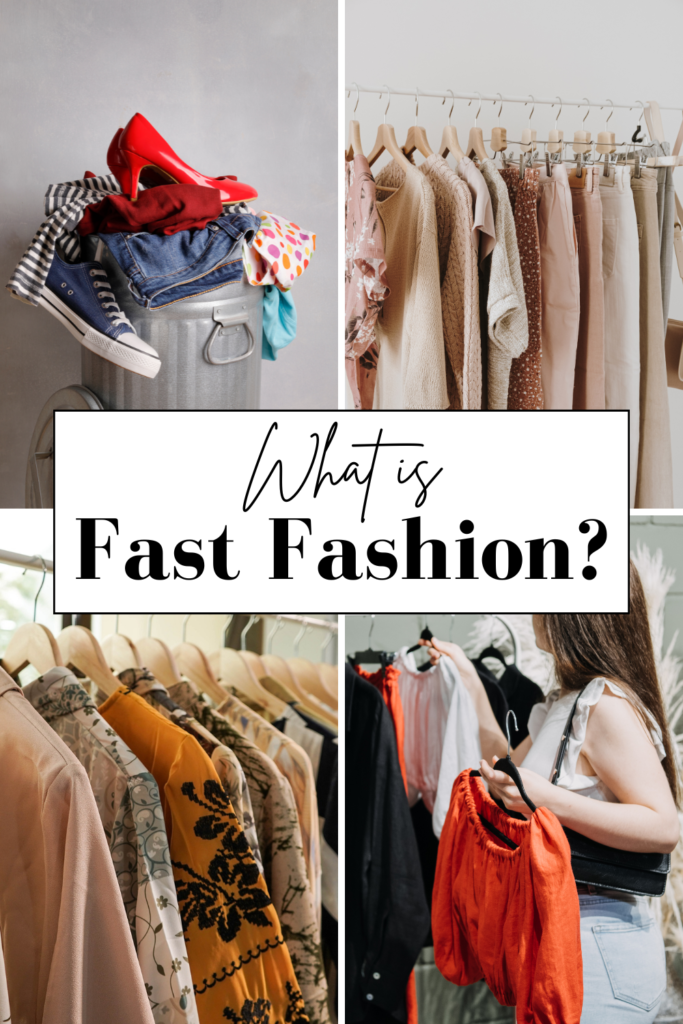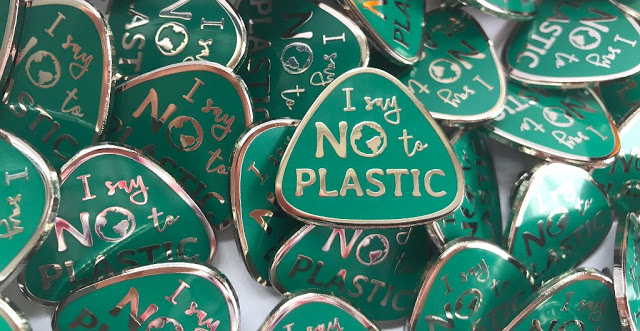As sustainability garners more attention, the term “fast fashion” becomes increasingly prevalent. But what exactly does this term mean? Why is it so bad?? While it allows consumers to buy trendy, low-priced outfits, the true cost of this industry is often hidden. In today’s post, we will be defining exactly what this term encompasses, its downsides, and how you can (and should!) avoid it.

Defining Fast Fashion
“Fast fashion” refers to cheap, trendy clothing that samples ideas from the runway or celebrity culture and turns them into garments in massively accessible stores at breakneck speed. Brands like Zara, H&M, Forever 21, and Shein exemplify this model, but there are plenty of other brands that you can spot as fast fashion as well. The appeal is simple – cheap, “trendy” clothing that will keep you in style throughout the year.
The Downsides of This Industry:
For those who think constantly updating their wardrobe is essential, I caution you to think about the negatives to this industry. The rapid production and turnover of garments have severe consequences:
- Environmental Impact: The need to produce all this clothing consumes vast amounts of water and energy. It contributes significantly to pollution and waste due to the non-biodegradable materials in many fast fashion products. Plus, a lot of this clothing (either worn or just unsold) ends up in the landfill.
- Economic Deception: While fast fashion appears wallet-friendly, its low durability requires frequent replacements, thus not truly saving any money in the long term.
- Social Injustice: To keep costs low, many brands outsource production to countries with lax labor laws. Workers in these factories often face unsafe conditions, low wages, and long hours. Child labor and exploitation are also prevalent issues within the industry. Is that worth it for a cheap, see-through pair of leggings??
5 Easy Ways to Avoid Fast Fashion:
Have no fear – it isn’t difficult to avoid this industry altogether! Here’s how:
- Reduce Consumption: The easiest hack to be more sustainable – consume less! Invest in fewer, high-quality pieces that will last longer. Look for timeless pieces made from durable materials and better fabrics. Although they may cost more upfront, you won’t have to replace them as frequently.
- Choose Second-hand: One of the most effective ways to avoid fast fashion is to buy secondhand clothing. Thrift stores, consignment shops, and online marketplaces are great sources for pre-owned apparel that can often be higher quality than fast fashion items. Thrifting not only extends the clothing lifecycle but also reduces demand for new fast fashion items too.
- Support Ethical and Sustainable Brands: Opt for brands with transparent, sustainable practices (but beware of greenwashing). These brands often use eco-friendly materials, ethical labor practices, and have a transparent supply chain.
- Repair and Upcycle: Taking better care of your garments can extend their lifespan significantly. Follow care instructions closely, repair them when needed, and wash clothes less frequently and at lower temperatures to preserve their quality and reduce energy use.
- Donate Responsibly: Ensure your old clothes are given a new life by donating them to shelters, thrift shops, or non-profits looking for donations. This will allow your clothing to have a second (or third!) life before ending up in the landfill.

As of recent developments, awareness and criticism of fast fashion have grown, leading some brands to pledge better environmental practices. However, true change requires shifting consumer culture towards sustainability and rejecting the disposability promoted by fast fashion. What are your thoughts on fast fashion? Have you taken steps to reduce your fashion footprint?
Love,
Jenna ♥





I definitely struggle with fast fashion, because it suits my budget, but I understand there are many issues associated with the practices and consumption. Thank you for this informative post <3